How To Clean A Blackstone Griddle
Learn how to clean a Blackstone griddle after every use so it maintains a pristine finish.
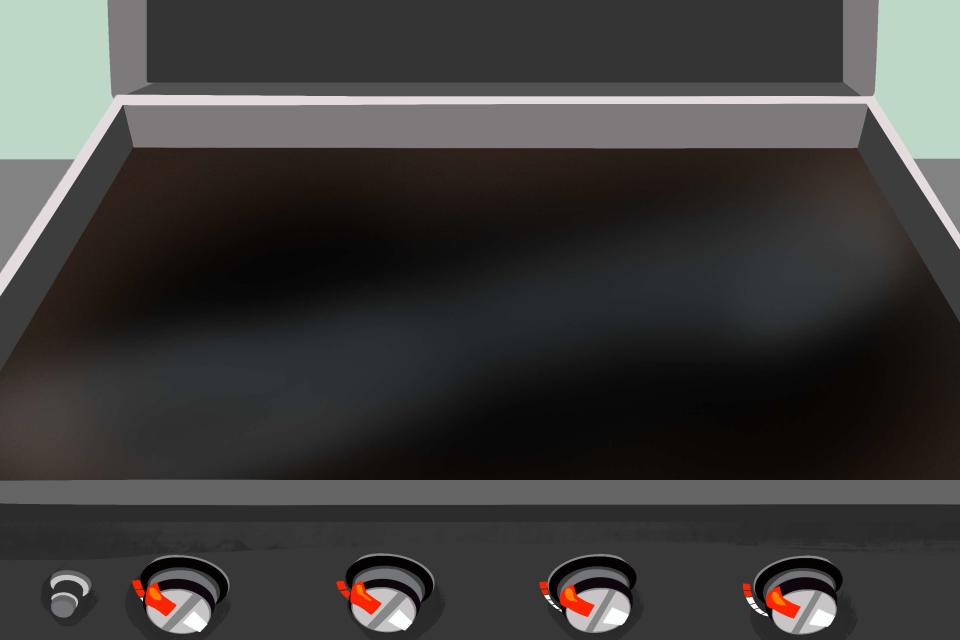
Kailey Whitman/Dotdash Meredith
If you have the space to add a Blackstone griddle to your outdoor cooking options, it's a fantastic complement to the grill you likely already have. Unlike the grill, the Blackstone has a flat cooking surface that's perfect for everything from pancakes and eggs to smash burgers, fried rice, blackened fish, and fajitas.
Blackstone's griddle options range from 17 to 36 inches, so you can choose the size that best suits your needs. The griddle surfaces are made of steel, which requires regular care to prevent rust. It’s not hard, and you need to consider cleaning the cooktop an essential step every time you fire up your griddle.
Learn how to clean a Blackstone griddle properly so it's always in top cooking shape.
Why You Should Clean Your Blackstone Griddle Regularly
Although Blackstone’s griddles are made of steel, the material performs similarly to cast iron. Think of your favorite cast-iron skillet: When you clean and dry it properly after each use, it maintains its nonstick surface. If you don’t, it can deteriorate or rust. The same is true of your Blackstone griddle.
To keep it in good condition and free of rust, you’ll need to clean it every time you use it. (This is different from the initial seasoning process.)
Recommended Cleaning Tools
You can go crazy with accessories for your Blackstone griddle—there are tons available. That's fine if you have the money to spend and the space to store them, but they're not necessary. Here’s a list of the essential tools for cleaning your griddle:
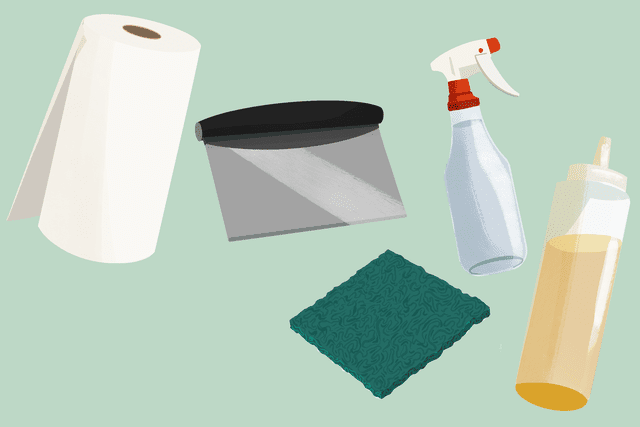
Kailey Whitman/Dotdash Meredith
Paper towels: Many Blackstone models have a swing-out paper towel holder—and for good reason. You’ll need them for cleaning your griddle.
Scraper and scouring pads: The five-piece set from Blackstone is ideal. You'll have the peace of mind of knowing that the scouring pads are safe to use on the griddle, and they pop into a handle that makes scrubbing easier. The scraper also has a handle (ones without handles look like a bench scraper), which gives you more leverage when cleaning.
Spray bottle: In the cleaning instructions below, you’ll see that you need to spray hot water over the surface of the griddle. Any inexpensive spray bottle works well.
Squeeze bottle: You can get by without a squeeze bottle, but it’s helpful and inexpensive. Pick one up from any big box or restaurant supply store and fill it with oil. You can get more even distribution of the oil by squirting it in a zigzag line over the surface of the griddle (and you’ll then wipe it in with paper towels). The squeeze bottle is also great for distributing oil on a hot griddle when you’re ready to cook.
Step-by-Step Guide To Cleaning a Blackstone Griddle
Cleaning your Blackstone griddle after cooking on it is easy and takes just a few minutes. Just follow these steps:
Step 1. Cool Down the Griddle
After cooking, allow the griddle to cool down. No problem, as this can happen while you enjoy your griddle-cooked meal.
Now, don’t forget to actually go back outside and tend to the griddle; this happens more frequently than you might think. Set out a reminder for yourself: Drape a kitchen towel over the patio door, set a spray bottle by the door, or tack a sticky note to the door.
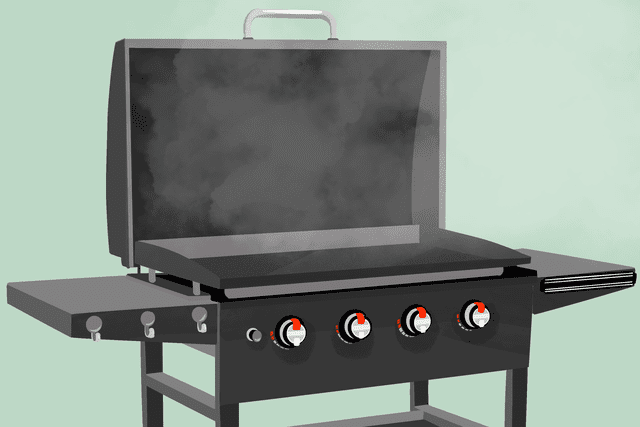
Kailey Whitman/Dotdash Meredith
Step 2. Scrap the Griddle
Once you've returned to the cool griddle (it's fine if the cooktop is a little warm), the first step is to remove any large pieces of food or pools of grease. Using a wide spatula or scraping tool (see recommended tools above), scrape everything to the opening at the back of the griddle. Blackstone griddles have a patented Rear Grease Management System which allows you to push grease and debris through a hole at the back of the griddle into a drip pan. Wipe off any remaining oil or grease with paper towels.
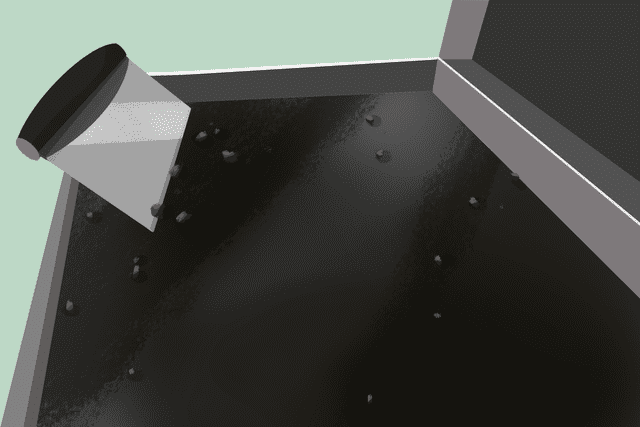
Kailey Whitman/Dotdash Meredith
Step 3. Spray and Scrub
Next, spray the griddle with hot water, concentrating on areas with stuck-on food, and gently rub with a non-metallic scouring pad (see tools section above). You don't need to use soap; a little bit of water should suffice.
For general cleaning, you’ll want to avoid metal scrubbing pads, which might gouge the metal and remove the seasoning from the griddle's surface. Wipe the surface dry with paper towels.
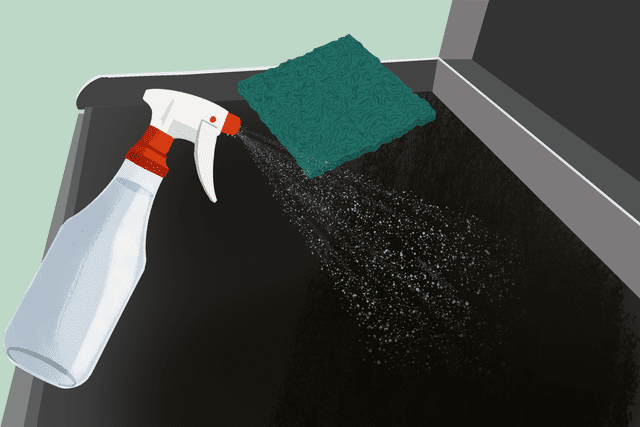
Kailey Whitman/Dotdash Meredith
Step 4. Season the Griddle
Finally, spread a small amount of oil over the entire surface of the griddle. You only need about 2 to 3 tablespoons of canola, flaxseed, or vegetable oil. Spread it evenly in a thin layer; you don’t want it to pool on the surface. That’s it. Cover the griddle, and it’ll be ready to go the next time you need it. Note that, as with a cast-iron skillet or wok, each time you cook on it, clean it, and wipe it down with oil, you build up the seasoning.
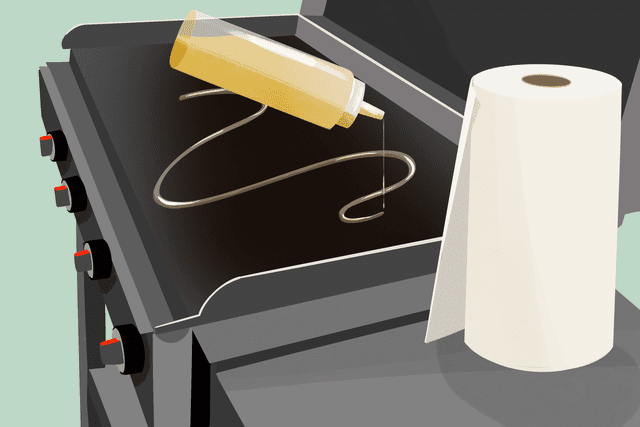
Kailey Whitman/Dotdash Meredith
Tips for Removing Stubborn Stuck-on Bits or Rust
If your griddle develops spots of rust or areas caked with stubborn bits, the cleaning process will be a little different. Follow these steps to get your griddle back in tip-top shape:
Heat the griddle over high heat for several minutes, until the surface is very hot. Grab some heavy-duty oven/grill mitts to protect your hands from the heat.
Keeping the burners on high and using the scraping tool or a bench scraper, scrape at a roughly 45-degree angle to remove the rust or the stuck-on food. Take care not to scrape so hard that you gouge the surface. And keep the surface dry; you don’t need your spray bottle of water for this.
Cool the griddle completely and wipe up any rust particles or debris with paper towels.
Pour about 1/4 cup of canola, flaxseed, or vegetable oil over the surface of the griddle, and scrub the oil into the surface using a pumice grill block. Wipe up the oil and debris with paper towels.
Inspect the griddle for any remaining rust or stuck-on bits. If there is any, repeat step 4.
When you’ve removed all rust, rub the griddle with oil as described in step 4 in the general cleaning instructions above.
Tips on Maintaining Your Blackstone Griddle
If you take care of your Blackstone griddle, it will greet you with a well-seasoned, nonstick surface every time. If you neglect it, it can rust or start to peel; grease can accumulate and "dirty up" the next food you try to cook on the griddle. Keep these tips in mind whenever you use your griddle.
Don't forget to clean it every time you use it, period. Try to follow the mantra of leaving it in better shape than you found it.
If you happen to develop some rust spots, take care of them as soon as possible using the instructions above.
Make sure to cover the griddle after use and store it in a dry or covered area if possible.
For more Southern Living news, make sure to sign up for our newsletter!
Read the original article on Southern Living.

